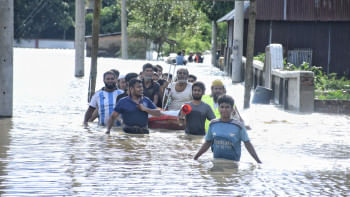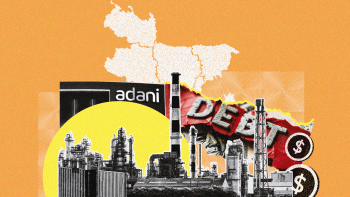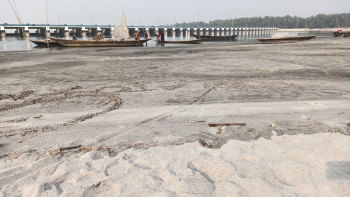India's hydropower projects, power corridor, and our concerns

India has recently decided to invest $1 billion to expedite the construction of 12 hydropower projects upstream of the Brahmaputra River in the northeastern state of Arunachal Pradesh. A couple of months ago, the federal finance ministry approved up to 750 crore rupees ($89.85 million) as financial assistance to each hydropower project in the state. Earlier in August 2023, the state government of Arunachal Pradesh signed a memorandum of agreement (MoA) with three central state-owned power companies to generate a total of 11,517 megawatts (MW) of electricity through these projects. Of these 12 projects, five projects of 2,620MW total capacity were allocated to the North Eastern Electric Power Corporation Limited (NEEPCO), five projects of 5,097MW capacity to Satluj Jal Vidyut Nigam Ltd (SJVN), and two projects of 3,800MW capacity to the National Hydroelectric Power Corporation Ltd (NHPC).
These hydroelectric projects with reservoirs of varying capacities will be built on different tributaries of Siang, Dibang and Subansiri rivers, which themselves are major tributaries of the Brahmaputra. For example, the 1,000MW Naying hydroelectric power project with a reservoir capacity of 82 million cubic metres is planned on the Siyom River, which is a major tributary of the Siang. The 680MW Attunli hydroelectric power project with a reservoir capacity of 13.96 million cubic metres will be built on the Tangon River which is a tributary of the Dibang. And the 1,800MW Kamala hydroelectric power project with a reservoir capacity of 623.58 million cubic metres is planned on the Kamala River, a tributary of the Subansiri.
Not only these 12 projects, the total hydropower potential of Arunachal Pradesh is estimated to be over 57,000MW, as per the central electricity authority of the state. To tap into this hydropower potential, India's plan is to construct at least 135 hydroelectric power projects on different tributaries of Brahmaputra River.
If so many hydropower projects are constructed by building dams upstream of the Brahmaputra, it will intensify water shortage in Bangladesh during the dry season, while during monsoon, opening the dams will increase the risk of flash floods. According to a study by the US-based Center for Naval Analyses (CNA), the Brahmaputra provides 75 percent of river water in Bangladesh during the dry season. Bangladesh is already getting 25 percent less than the required water from the Brahmaputra and facing human security pressure, which will be magnified by building dams upstream and water diversion activities.
Regrettably, there is a serious lack of information in Bangladesh regarding the danger of these hydroelectric projects. Moreover, arrangements are being made to facilitate transmission of the electricity generated from these power plant projects from the northeastern part to the northern, western and southern regions of India through Bangladesh. This huge amount of electricity cannot be used in the northeastern region of India due to a lack of demand, and it is also inconvenient for strategic and technical reasons to transmit this electricity through the narrow Siliguri Corridor in West Bengal. As the parliamentary standing committee on energy of 15th Lok Sabha explained, availability of power transmission corridors through the Chicken's Neck area is limited due to the requirement of space for habitation, railways, roads, oil and gas pipelines, communication links, etc and is gradually getting constricted.
For this reason, the Indian government has been pressuring Bangladesh for a long time to approve the construction of a power transmission corridor from northeast India through Bangladesh to other parts of the country. To this end, discussions have been going on for a long time in the meetings of Bangladesh-India Joint Working Group (JWG) and Joint Steering Committee (JSC). At last, at the 22nd meeting of the JWG on July 19—less than three weeks before the Hasina regime fell—the Bangladesh side agreed to start the work to construct a 765kV transmission line from India's Katihar, Bihar to Barnagar, Assam through Bangladesh's Parbatipur, to be completed by 2028.
According to the meeting, the Bangladesh and Indian segments of the cross-border transmission line are supposed to be installed by the respective countries. The Power Grid Bangladesh PLC is set to prepare a technical proposal on the compatibility in equipment design, quality assurance, financial support, and matching completion within six months.
This decision was made despite the fact that technical experts in Bangladesh had raised a number of serious concerns regarding the benefit and impact of installing this interconnection line for Bangladesh in the previous JWG meetings. For example, in the 18th JWG meeting on March 7, 2020, Bangladesh mentioned that the country did not have any additional power import requirement at that time and in the future till 2030 that could justify the construction of the interconnection line. In the 19th JWG meeting on January 21, 2021, Bangladesh expressed concern that this transmission system might be used to evacuate hydropower from northeast India in the future, and Bangladesh being a lower riparian country, the issue also needs to be discussed by the Joint River Commission (JRC) Bangladesh and India. The Bangladesh side also raised the issue of security and the operation and maintenance of the line. Bangladesh proposed to sign a data-sharing agreement in order to get different kinds of information to conduct comprehensive feasibility study, hydrological and water modelling studies, and environmental and social impact assessments.
But, at the higher-level 19th JSC meeting on January 23, 2021, India denied the relation of any specific hydroelectric power project with the Katihar-Parbatipur-Barnagar transmission line and said no riparian issues were involved with the proposed transmission system. Thus the issue of data-sharing and hydrological and water modelling studies involving the Joint River Commission were dropped from the agenda, and it was decided that Bangladesh would carry out its due diligence about social and environmental impact inside its territory, as undertaken for other transmission lines, and evaluation of legal and technical aspects of the projects will be continued parallelly.
Although India refuted the relation of the transmission line with the hydropower projects in Arunachal, it is obvious that transmission through Bangladesh would be a practical necessity for the utilisation of the huge power generated in the Indian state. That's why it would be suicidal for Bangladesh to allow India to transmit the power generated by damming the Brahmaputra river system.
In this context, the interim government of Bangladesh currently has two major responsibilities. First, it should protest India's unilateral decisions to construct 12 hydroelectric power projects on the upstream of Brahmaputra basin and take the necessary diplomatic steps to deter India from moving forward. Secondly, it should cancel the approval of the Katihar-Parbatipur-Barnagar transmission line project immediately so it cannot be used by India to evacuate the hydropower generated by damming the Brahmaputra.
Kallol Mustafa is an engineer and writer who focuses on power, energy, environment and development economics. He can be reached at [email protected].
Views expressed in this article are the author's own.
Follow The Daily Star Opinion on Facebook for the latest opinions, commentaries and analyses by experts and professionals. To contribute your article or letter to The Daily Star Opinion, see our guidelines for submission.

 For all latest news, follow The Daily Star's Google News channel.
For all latest news, follow The Daily Star's Google News channel. 







Comments